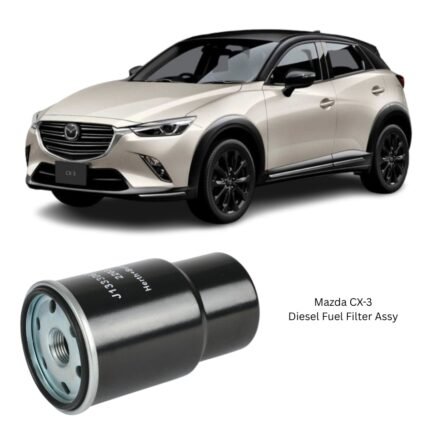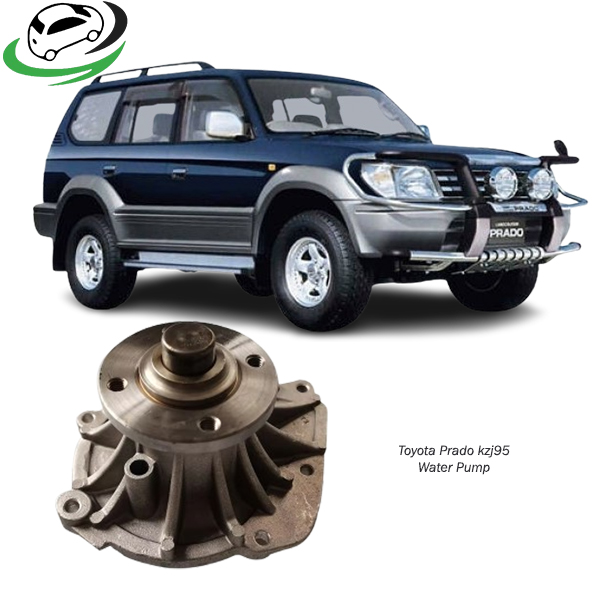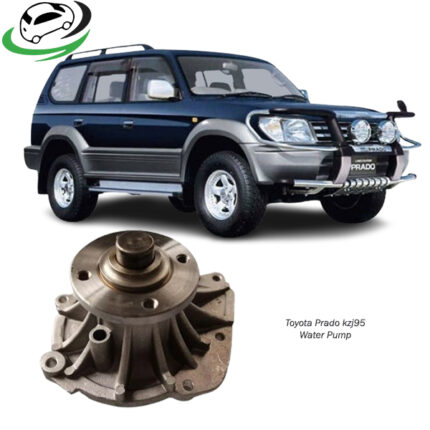Get Toyota Land Cruiser Prado KZJ95 Water Pump Assy Without Housing T-125 in Kenya
The water pump assembly without housing is a critical component of a vehicle’s cooling system, responsible for circulating coolant through the engine to regulate its temperature. The absence of a housing in this assembly means it primarily consists of the internal components needed for coolant flow, leaving the housing to be a separate, often vehicle-specific, part. In this detailed explanation, we will cover the water pump’s structure, functions, benefits, common issues, and maintenance practices in the absence of its housing.
1. Structure and Components of a Water Pump Assembly Without Housing
The water pump assembly without housing focuses on the pump mechanism itself. The housing, typically part of the engine block or attached separately, acts as a protective cover for the internal components and helps guide the coolant flow. In a water pump assembly without housing, the key parts include:
- Impeller: The impeller is the core of the water pump. It is a rotating component made of metal or durable plastic, designed to create the necessary flow of coolant through the engine. Its blades push the coolant outward from the center, driving it into the cooling system.
- Shaft: The impeller is mounted on a shaft that connects to the engine’s crankshaft through a belt or gear system. As the engine runs, it powers the rotation of the shaft, which in turn spins the impeller, driving the circulation of the coolant.
- Bearing Assembly: The shaft is supported by bearings that allow it to rotate smoothly while minimizing friction. These bearings are designed to withstand the constant movement of the impeller and are critical for the longevity and efficiency of the water pump.
- Seal: A mechanical seal is located between the shaft and the impeller to prevent coolant from leaking out of the pump and into the engine or other components. This seal is essential for maintaining the correct pressure within the cooling system.
- Pulley: The pulley is attached to the end of the shaft and connects to the engine’s drive belt system. It ensures that the water pump is driven by the engine, usually via the accessory belt. Without the pulley, the impeller would not be able to rotate and circulate the coolant.
2. Functions of the Water Pump Assembly
The primary function of the water pump assembly is to ensure the continuous circulation of coolant throughout the engine and the cooling system. This prevents the engine from overheating, which can lead to significant damage, including warping of the engine block or head, blown gaskets, and reduced performance.
The key functions of the water pump assembly are:
- Coolant Circulation: The water pump draws coolant from the radiator and forces it through the engine’s water jackets. These jackets are designed to absorb heat from the engine and transfer it to the coolant. The heated coolant is then returned to the radiator, where it is cooled before being recirculated.
- Maintaining Engine Temperature: By circulating coolant through the engine, the water pump helps regulate the engine’s temperature, keeping it within an optimal operating range. This is critical for preventing overheating, which can cause engine damage, and overcooling, which can reduce engine efficiency.
- Supporting the Thermostat Function: The water pump works in conjunction with the thermostat, which controls the flow of coolant based on the engine’s temperature. When the engine is cold, the thermostat remains closed, restricting coolant flow. As the engine heats up, the thermostat opens, allowing the water pump to circulate coolant and prevent overheating.
3. Benefits of the Water Pump Assembly
The water pump assembly is essential for maintaining engine performance, durability, and efficiency. Its benefits include:
- Efficient Cooling: The water pump ensures that coolant is circulated evenly and continuously through the engine, promoting efficient heat transfer and cooling. This is particularly important during high-performance driving or under heavy loads, where the engine generates more heat.
- Preventing Overheating: Without a functioning water pump, the engine would quickly overheat, leading to catastrophic damage. The pump prevents this by constantly moving coolant through the engine’s cooling system.
- Prolonging Engine Life: By regulating the engine’s temperature, the water pump helps prevent thermal stress on the engine’s components. This reduces wear and tear, prolongs engine life, and minimizes the likelihood of costly repairs.
- Supporting Optimal Fuel Efficiency: An engine that runs at its ideal temperature is more fuel-efficient. The water pump ensures the engine does not overheat or overcool, allowing it to perform at its best and reducing fuel consumption.
- Smooth Engine Operation: With the water pump functioning properly, the engine remains within the optimal temperature range, which ensures smooth and consistent performance. This results in better acceleration, reliable power delivery, and overall driving comfort.
4. Common Issues with Water Pump Assemblies
Over time, the water pump can experience wear and develop issues that may affect the engine’s cooling system. Some common problems associated with water pump assemblies include:
- Coolant Leaks: One of the most common signs of a failing water pump is coolant leakage. This can be caused by a damaged or worn-out seal, which allows coolant to escape from the pump. If left unchecked, coolant leaks can lead to engine overheating and potential damage.
- Worn Bearings: The bearings in the water pump are subject to continuous motion, which can cause them to wear out over time. When the bearings fail, the impeller may not spin as efficiently, reducing coolant circulation. Worn bearings can also cause a whining or grinding noise from the pump.
- Corroded or Damaged Impeller: Over time, the impeller can become corroded or damaged, especially if the coolant is contaminated or contains debris. A damaged impeller will not be able to circulate coolant effectively, leading to overheating and potential engine damage.
- Loose or Worn Drive Belt: The water pump is driven by the engine’s drive belt, which can become loose, worn, or damaged. A loose belt will not turn the pulley effectively, reducing the efficiency of the water pump. In severe cases, the belt may snap, causing the pump to stop functioning altogether.
- Overheating Issues: A malfunctioning water pump will result in improper coolant circulation, leading to engine overheating. This is one of the most dangerous consequences of water pump failure and should be addressed immediately to avoid severe engine damage.
5. Maintenance Tips for Water Pump Assemblies
Regular maintenance of the water pump is essential to ensure the longevity of the cooling system and the engine. Here are some maintenance tips:
- Inspect for Leaks: Regularly check for any signs of coolant leaks around the water pump. Look for puddles of coolant under the vehicle, or stains on the engine block. Early detection of leaks can prevent more severe issues down the line.
- Check the Drive Belt: Inspect the condition of the drive belt that powers the water pump. If the belt is cracked, frayed, or loose, it should be replaced immediately to prevent water pump failure.
- Monitor Engine Temperature: Pay attention to the engine’s temperature gauge while driving. If you notice the engine running hotter than normal, it could be a sign that the water pump is not circulating coolant effectively. Address this issue as soon as possible to avoid overheating.
- Flush the Cooling System: Periodically flushing the cooling system helps remove contaminants and debris that can damage the water pump’s impeller or clog the coolant passages. Use high-quality coolant and follow the manufacturer’s recommendations for how often the system should be flushed.
- Replace the Pump as Needed: Water pumps typically last between 60,000 and 100,000 miles, depending on the vehicle and driving conditions. If your vehicle is approaching this range, it may be time to consider replacing the water pump, even if it hasn’t failed yet.
- Use the Correct Coolant: Always use the coolant specified by the vehicle manufacturer. Using the wrong type of coolant can lead to corrosion and damage to the water pump, reducing its lifespan.
- Inspect the Impeller: When replacing or servicing the water pump, check the condition of the impeller for signs of wear, corrosion, or damage. A well-functioning impeller is essential for proper coolant circulation.
6. Conclusion
The water pump assembly without housing is a crucial part of the vehicle’s cooling system. Despite lacking the protective housing, the internal components like the impeller, shaft, bearings, seal, and pulley work together to ensure effective coolant circulation, regulating engine temperature, and preventing overheating. Proper maintenance, regular inspections, and timely replacement of worn parts are essential to keep the water pump functioning effectively, prolonging the life of the engine and ensuring optimal vehicle performance. Whether you are a daily commuter or a performance enthusiast, a well-maintained water pump ensures your engine stays cool, efficient, and reliable.
Follow us on Facebook for more parts.





Reviews
Clear filtersThere are no reviews yet.